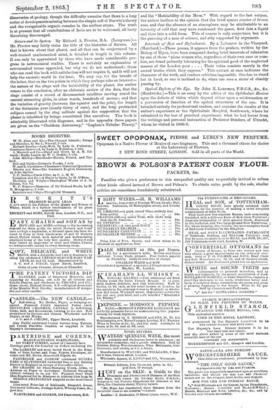Saturn and its System. By Richard A. Proctor, BA. (Longman.)—
Mr. Proator may fairly claim the title of the historian of Saturn. All that is known about that planet, and all that can be conjectured by a well-trained mathematical mind, is detailed at length in this volume. It can only be appreciated by those who have made considerable pro- gress in astronomical studies. There is certainly an explanation of astronomical terms appended, but why we do not understand ; those who can read the book with satisfaction will not require it, and it will not help the exoteric world in the least. We may say, for the benefit of the latter, that on the two points in which they perhaps take an interest— the nature of the rings and the habitability of the planet, the author comes to the conclusion, after an elaborate review of the data, that the rings consist of a crowd of disconnected satellites moving round the central attracting globe, in other words, hundreds of moons ; and that the variation of gravity (between the equator and the pole), the length of the Satnrnian year (nearly thirty of ours), and the long protracted eclipses caused by the ring militate against the supposition that the planet is inhabited by beings constituted like ourselves. The book is admirably illustrated with diagrams, and in the appendix three papers are given on the "Chaldean Astronomy," "Laplace's Nebular Theory," and the "Habitability of the Moon." With regard to the last subject, the author inclines to the opinion that the level spaces consist of frozen seas, and that the absence of an atmosphere may be attributable to an intensity of cold that may have condensed the gases, first into a liquid and then into a solid form. This of course is only conjecture, but it is the guessing of a man of science, and ably supported by argument.






























 Previous page
Previous page